★★
“BDSM, invisible monsters and Julie Strain. Who could ask for more? Well, actually…”
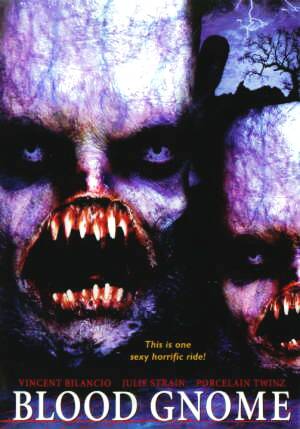 If you’ve been thinking, “What I want is a cheap monster movie set in the fetish community,” this one’s for you. Crime scene photographer Daniel (Bilancio) discovers his video camera can see ugly little creatures, which have been slaughtering S+M fans as they engage in their games. Turns out they belong to Darlinda (Walton), an evil dominatrix who keeps a tentacled monster in a box; it gives birth to the little critters, and she uses the placentas to make a drug. Can he convince others of their existence before his girlfriend (and nice dominatrix, contradiction in terms though that may seem) Divinity (Pursley) gets eaten at the big S+M party? Which, despite a sleeve to the contrary, is actually the only scene in which Strain and the Porcelain Twinz appear.
If you’ve been thinking, “What I want is a cheap monster movie set in the fetish community,” this one’s for you. Crime scene photographer Daniel (Bilancio) discovers his video camera can see ugly little creatures, which have been slaughtering S+M fans as they engage in their games. Turns out they belong to Darlinda (Walton), an evil dominatrix who keeps a tentacled monster in a box; it gives birth to the little critters, and she uses the placentas to make a drug. Can he convince others of their existence before his girlfriend (and nice dominatrix, contradiction in terms though that may seem) Divinity (Pursley) gets eaten at the big S+M party? Which, despite a sleeve to the contrary, is actually the only scene in which Strain and the Porcelain Twinz appear.
Trying to get others to take a threat they can’t see seriously, rather than thinking you’re mad, is a neat concept. Unfortunately, it’s only used in a couple of scenes, and instead we get any number of bondage sequences which, unless you’re into that kind of thing, will likely prove extremely tedious. Darlinda does kick butt to a surprising degree (which is why it’s included here) – according to the making-of documentary, Walton is a stuntwoman, though her other IMDB credits appear to be zero. The creators cheerfully admit to its “microbudget”, and I suspect the DVD commentary is probably more interesting than the film itself. Certainly, the lack of explanation offered for almost anything is disappointing, though the gore, toothed monster vagina, and copious breasts do fully justify the movie’s R-rating.
I love cheap films that make up for in imagination and with what they lack in budget – after all, that quality costs nothing. As its inspired title shows, Blood Gnome is not totally bereft in these departments, but the over-riding interest in leveraging events into an S+M setting, for no visible reason, hampers and damages the result considerably. Change that, put some more thought into the script, and the fun B-movie trapped here might just have clawed its way out.
Dir: John Lechago
Star: Vincent Bilancio, Melissa Pursley, Ri Walton, and Julie Strain (but only just…)





 It’d probably be best to watch the original film, Poly Matrix, immediately before this, as otherwise, you’ll be kinda hitting the ground running. After those events, Ross Syllabus and “Third” [a model of android which can reproduce] Armitage have set up home with their daughter, who doesn’t know her mother is anything by human; meanwhile Ross operates under an assumed name as a security guard. However, an incident turns him into an unwilling spokesman for robot rights once again, and when he is sent to Earth as a Martian delegate, his daughter Yoko is kidnapped by a faction seeking to reverse his vote. It’s time for Armitage to put aside her chores and kick butt.
It’d probably be best to watch the original film, Poly Matrix, immediately before this, as otherwise, you’ll be kinda hitting the ground running. After those events, Ross Syllabus and “Third” [a model of android which can reproduce] Armitage have set up home with their daughter, who doesn’t know her mother is anything by human; meanwhile Ross operates under an assumed name as a security guard. However, an incident turns him into an unwilling spokesman for robot rights once again, and when he is sent to Earth as a Martian delegate, his daughter Yoko is kidnapped by a faction seeking to reverse his vote. It’s time for Armitage to put aside her chores and kick butt.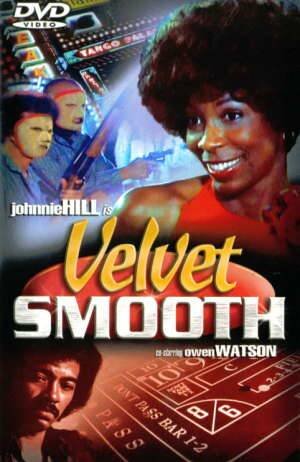 Let’s be perfectly clear about this: at least one, possibly more, of the points awarded to this movie only apply if you, like us, are connoisseurs of the trash aesthetic. If you delight in bad acting, poor action and technical ineptness, this is for you. Otherwise…consider yourself warned. Not to be confused with Jeannie TNT Jackson Bell, this was Johnnie Hill’s only film – and when you’ve seen it, you’ll understand why. She plays Velvet, a private investigator brought in, along with her two female sidekicks (also adept in martial arts, even if we are redefining the word “adept” here), when someone starts encroaching on a crime lord’s territory. Who is behind this? And who is behind them?
Let’s be perfectly clear about this: at least one, possibly more, of the points awarded to this movie only apply if you, like us, are connoisseurs of the trash aesthetic. If you delight in bad acting, poor action and technical ineptness, this is for you. Otherwise…consider yourself warned. Not to be confused with Jeannie TNT Jackson Bell, this was Johnnie Hill’s only film – and when you’ve seen it, you’ll understand why. She plays Velvet, a private investigator brought in, along with her two female sidekicks (also adept in martial arts, even if we are redefining the word “adept” here), when someone starts encroaching on a crime lord’s territory. Who is behind this? And who is behind them?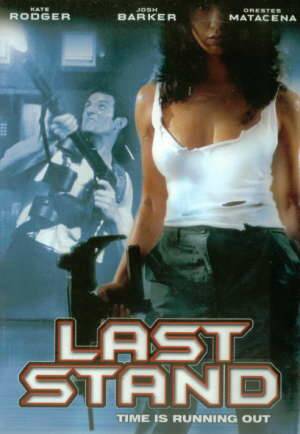 Okay, ‘godlike genius’ is stretching it a
Okay, ‘godlike genius’ is stretching it a  When Jamie (Bowen) accidentally kills her unpleasant boyfriend, it seems her life is over. Luckily, the first person on the scene is Laura (Lords), a latent psychopath who seizes the chance to fulfill her lifelong ambition: killing men who treat women badly. As she says, “Ridding the world of irredeemable men is what I was born to do.” Neither Jamie nor the third initiate into their little secret, Arlene (Maxey), are quite as enthusiastic, but despite this, Laura sets to work with a vengeance, and things start spiralling out of control.
When Jamie (Bowen) accidentally kills her unpleasant boyfriend, it seems her life is over. Luckily, the first person on the scene is Laura (Lords), a latent psychopath who seizes the chance to fulfill her lifelong ambition: killing men who treat women badly. As she says, “Ridding the world of irredeemable men is what I was born to do.” Neither Jamie nor the third initiate into their little secret, Arlene (Maxey), are quite as enthusiastic, but despite this, Laura sets to work with a vengeance, and things start spiralling out of control.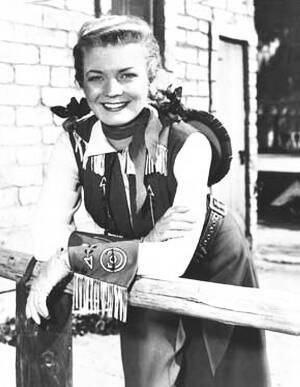 This TV series was Gene Autry’s idea; he wanted to give little girls a western star of their own, and created a show based on the character of Oakley, the most famous sharpshooter of all time. In his version, she lives in Diablo with her brother Tagg (Hawkins) and keeps the town safe along with deputy Lofty Craig (Johnson) – the sheriff, Annie’s uncle Luke, was somehow very rarely around… It ran for 81 episodes from January 1954 to February 1957; two DVDs, with five first season stories on each, have been released by Platinum – you can get the box set of both for $5.99, which is a steal.
This TV series was Gene Autry’s idea; he wanted to give little girls a western star of their own, and created a show based on the character of Oakley, the most famous sharpshooter of all time. In his version, she lives in Diablo with her brother Tagg (Hawkins) and keeps the town safe along with deputy Lofty Craig (Johnson) – the sheriff, Annie’s uncle Luke, was somehow very rarely around… It ran for 81 episodes from January 1954 to February 1957; two DVDs, with five first season stories on each, have been released by Platinum – you can get the box set of both for $5.99, which is a steal.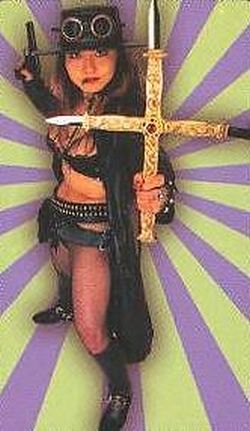
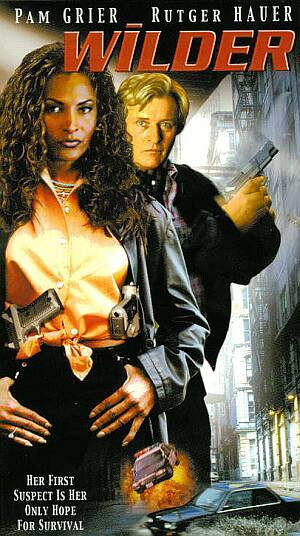 The first ten minutes of this seem intent on running out every stereotype possible: Pam Grier as a hot-headed black cop, juggling her job with life as a single mother, taking on prejudiced neighbours, etc, etc. Even her name – Wilder – sounds like something generated by a cliche machine. But as the film goes on, it twists away from the murder-mystery it starts as, eventually corkscrewing off into conspiracy theory, the black market in radioactive materials, illicit medical experiments and corrupt big business.
The first ten minutes of this seem intent on running out every stereotype possible: Pam Grier as a hot-headed black cop, juggling her job with life as a single mother, taking on prejudiced neighbours, etc, etc. Even her name – Wilder – sounds like something generated by a cliche machine. But as the film goes on, it twists away from the murder-mystery it starts as, eventually corkscrewing off into conspiracy theory, the black market in radioactive materials, illicit medical experiments and corrupt big business.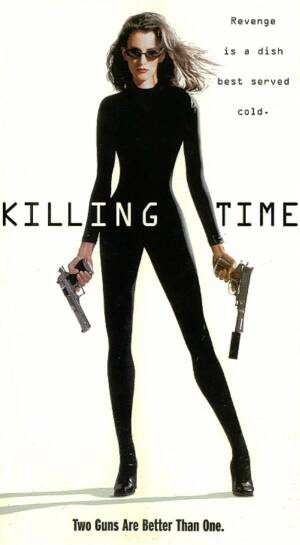 We Brits don’t do girls-with-guns movies: too busy drinking tea and arranging matchsticks, I imagine. This is a rare exception, and works not badly, combining a striking ‘Italian’ hitwoman in Maria (Torgan), with the bone-dry sarcasm of Guy Ritchie – at least, before he started making movies starring his missus, Madonna. Maria is brought in by Newcastle cop Bryant (Fairbrass) after the local crime lord (Leach) leaves a fellow policeman nailed to Bryant’s front door. Only, Bryant can’t afford to pay her, so blackmails some local thugs, led by Charlie (Thirkeld) to kill her after she’s done the job. Needless to say, things don’t quite go as planned, and the dead bodies start to accumulate, in a most non-British way.
We Brits don’t do girls-with-guns movies: too busy drinking tea and arranging matchsticks, I imagine. This is a rare exception, and works not badly, combining a striking ‘Italian’ hitwoman in Maria (Torgan), with the bone-dry sarcasm of Guy Ritchie – at least, before he started making movies starring his missus, Madonna. Maria is brought in by Newcastle cop Bryant (Fairbrass) after the local crime lord (Leach) leaves a fellow policeman nailed to Bryant’s front door. Only, Bryant can’t afford to pay her, so blackmails some local thugs, led by Charlie (Thirkeld) to kill her after she’s done the job. Needless to say, things don’t quite go as planned, and the dead bodies start to accumulate, in a most non-British way.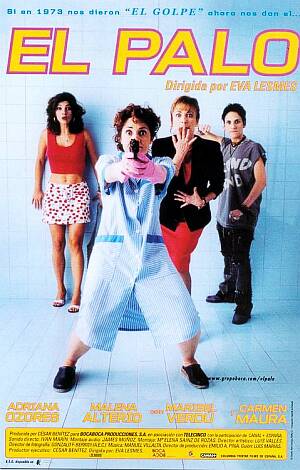
 Four unlikely women team up, for their own but unselfish reasons, in order to rob the bank where one (Ozores) works as a cleaning lady. There’s also a rich bankrupt, out to fund her daughter’s wedding; a slutty hairdresser who’s just found out she’s pregnant; and an antisocial punk orphan, who wants to be reunited with her father in Argentina. What makes this Spanish film work, is less the action, and more the characters – or at least, the women, since the men never become more than two-dimensional. The script is brisk and efficient, moving things along with swift abandon, and sucks the viewer in to a connection with the ladies, their problems, and the solution.
Four unlikely women team up, for their own but unselfish reasons, in order to rob the bank where one (Ozores) works as a cleaning lady. There’s also a rich bankrupt, out to fund her daughter’s wedding; a slutty hairdresser who’s just found out she’s pregnant; and an antisocial punk orphan, who wants to be reunited with her father in Argentina. What makes this Spanish film work, is less the action, and more the characters – or at least, the women, since the men never become more than two-dimensional. The script is brisk and efficient, moving things along with swift abandon, and sucks the viewer in to a connection with the ladies, their problems, and the solution.